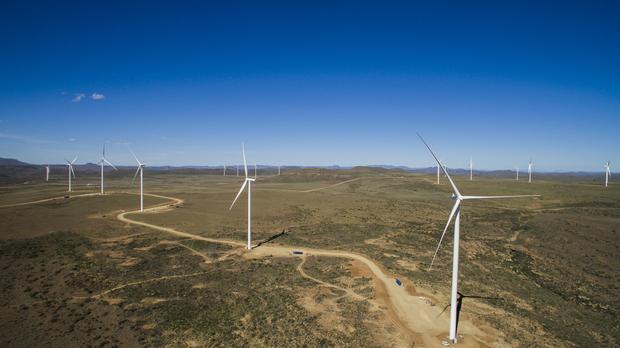The renewable energy sector could provide an unexpected but much-needed jobs boost to South Africa’s employment levels, as the sector continues to mature.
This is the view of renewables experts SOLA Future Energy , the company that replaced Robben Island’s diesel-powered electricity supply with a grid driven by solar energy.
This work earned them a nomination in the recent Vision2030 awards, a contest that recognises organisations, enterprises and individuals that are aligned with the government’s Nine-Point Plan to boost economic growth, and the National Development Plan (NDP).
According to Dom Wills, chief executive of SOLA Future Energy, the more that new solar systems are built and come online, the greater the growth in the ongoing job opportunities in both the operation and maintenance of these facilities.
“Although the job prospects for the construction of renewable energy projects are well understood, ongoing and permanent career opportunities created by the operation and maintenance of the solar systems are just as important and should not be underestimated,” added Wills.
This also comes after a call to business by President Cyril Ramaphosa in early September to place a moratorium on job cuts as the private sector and government tries to weather the recession.
Stats SA’s Quarterly Employment Statistics for June 2018, showed that quarter-on-quarter, the economy shed 69 000 jobs – from 9 817 000 in March to 9 748 000 in June.
Wills says the most common misconception about the renewable energy sector is that it lacks job opportunities. “At first, those seeking jobs in the energy sector in South Africa were just looking to work for entities like Eskom.”
“As more people understood that installed solar panels needed maintenance, interest in the sector grew. As the sector has grown, the opportunities have expanded and also become more specialised,” he adds.
Like any construction project, after a solar system is commissioned it requires ongoing upkeep, monitoring and care. But, many renewables jobs creation projections underestimate the operations and maintenance needed after construction.
The European market shows that for every MW of solar installed, some 28 job-years per MW were created.
Closer to home, across SOLA’s operations portfolio of 23.5 MW, 4 people are employed full time and one part time, to operate these facilities.
“If we extrapolate this to cover the entire embedded market, we estimate that at least 37 people are employed, full time, for South Africa’s current 200 MW of embedded generation. The market potential of 5000 MW means that at least 900 potential jobs could exist,” adds Wills.
Wills confirms, “these job estimates exclude the operation of utility-scale plants, as well the other types of maintenance – such as cleaning and landscaping – that are also required to maintain solar facilities.”
Wills explains that the sector requires a host of different skills – from engineering to the legal aspects of the job. “There are various sectors that are involved in the ongoing upkeep and operations within the renewable energy sector.”
He points out that the sector, in particular, needs more qualified electrical engineers, as well as analyst and business data specialists who would be employed to monitor and collate data after installation.
The type of work in operations and maintenance includes:
- Continuing to monitor the project remotely after installation – this function needs data analysts with experience in electrical installations and yield modelling.
- Technical maintenance, fault finding, mechanical and electrical inspections.
- Administrative work including reporting and invoicing
- Repairs and upkeep of various solar components, including modules, inverters and batteries depending on warranties
“As the renewable energy sector matures, the sector is able to create sustainable jobs,” Wills concludes.
Source: BUSINESS REPORT ONLINE



